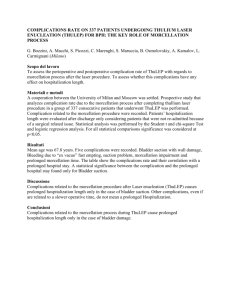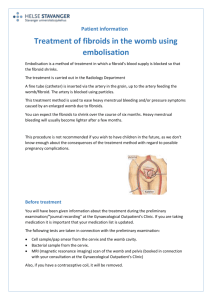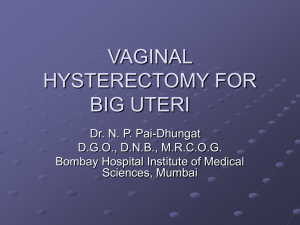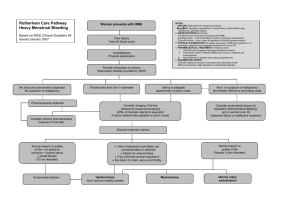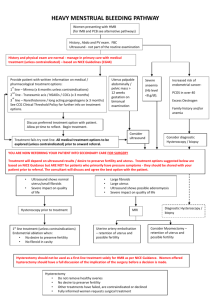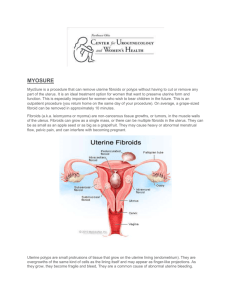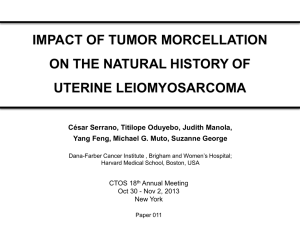Morcellation Consent Addendum Final
advertisement
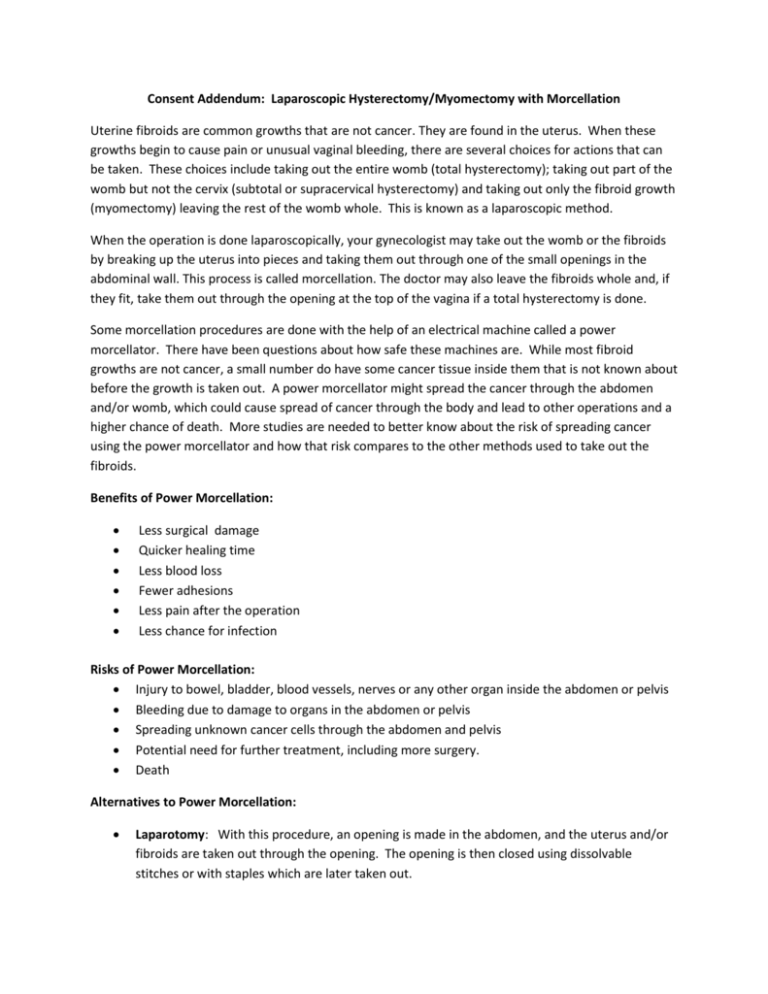
Consent Addendum: Laparoscopic Hysterectomy/Myomectomy with Morcellation Uterine fibroids are common growths that are not cancer. They are found in the uterus. When these growths begin to cause pain or unusual vaginal bleeding, there are several choices for actions that can be taken. These choices include taking out the entire womb (total hysterectomy); taking out part of the womb but not the cervix (subtotal or supracervical hysterectomy) and taking out only the fibroid growth (myomectomy) leaving the rest of the womb whole. This is known as a laparoscopic method. When the operation is done laparoscopically, your gynecologist may take out the womb or the fibroids by breaking up the uterus into pieces and taking them out through one of the small openings in the abdominal wall. This process is called morcellation. The doctor may also leave the fibroids whole and, if they fit, take them out through the opening at the top of the vagina if a total hysterectomy is done. Some morcellation procedures are done with the help of an electrical machine called a power morcellator. There have been questions about how safe these machines are. While most fibroid growths are not cancer, a small number do have some cancer tissue inside them that is not known about before the growth is taken out. A power morcellator might spread the cancer through the abdomen and/or womb, which could cause spread of cancer through the body and lead to other operations and a higher chance of death. More studies are needed to better know about the risk of spreading cancer using the power morcellator and how that risk compares to the other methods used to take out the fibroids. Benefits of Power Morcellation: Less surgical damage Quicker healing time Less blood loss Fewer adhesions Less pain after the operation Less chance for infection Risks of Power Morcellation: Injury to bowel, bladder, blood vessels, nerves or any other organ inside the abdomen or pelvis Bleeding due to damage to organs in the abdomen or pelvis Spreading unknown cancer cells through the abdomen and pelvis Potential need for further treatment, including more surgery. Death Alternatives to Power Morcellation: Laparotomy: With this procedure, an opening is made in the abdomen, and the uterus and/or fibroids are taken out through the opening. The opening is then closed using dissolvable stitches or with staples which are later taken out. Power morcellation using a bag: A bag is used inside the abdomen and pelvis to hold the uterus or fibroids during the operation and reduce spreading possible cancer cells. This method does not have a lot of reports or conclusions about how well it works. Manual morcellation: Using a knife to cut the tumor into smaller pieces by hand and counting the pieces to be sure they have all been taken out. This method has been used around the world for many years, but has not been used as much in the US where electric power morcellators have been readily available. Other alternatives: There are other procedures that can be used to shrink fibroids without using surgery, although these may be not be as good at taking out any unknown cancerous tissue. By signing below, I admit that I completely understand the information written above and that I have been given an chance to ask my doctor all of my questions about the risks, benefits, and other alternatives to laparoscopic removal of uterus/womb and/or fibroids using power morcellation, and that I agree to let my doctor use this procedure if necessary. Insert Tenet standard formatting for patient/provider signature/date/time

